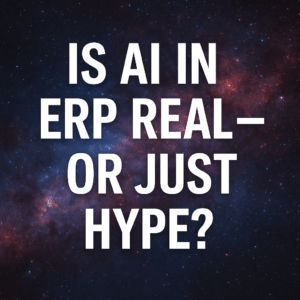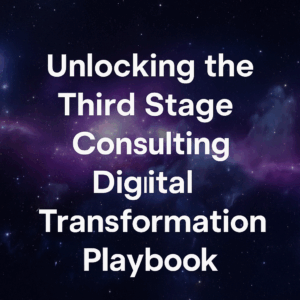Let’s face it: most people don’t associate many ERP systems with “flexible” or “agile.” Structure and standardization is one of the strengths of ERP systems like SAP S/4HANA, Oracle Cloud ERP, and others. But there are ways to create organizational agility as part of your digital transformation.
First, it is important to decide whether or not you really want organizational agility. It sounds good and “agile” is a big buzz word, but standardization and efficiency may be on your mind as well. These two things are in conflict. This could be why the organizational change field is in need of change.
It’s also not a simple, either/or type of answer. There is a whole spectrum in between the two extremes of complete standardization and inflexibility versus total decentralization and flexibility. Make sure you understand where on the spectrum your organization thinks it should be heading.
Assuming you are interested in creating some degree of agility in your organization, you will need an effective organizational change strategy to help you get there. Here are several components that will help you add agility to your project during your digital transformation or ERP implementation:
Table of Contents
ToggleOrganizational readiness assessment
The first step is to get a lay of the land by assessing potential barriers to change during your implementation. For example, a good organizational readiness assessment may determine that communication between departments or previous training gaffes are causing skepticism among employees. It is important to go beyond “are you ready for change?” and other superficial questions to dig into the root causes for resistance to change.
Change impact assessment
Employee training and communication is just the beginning of an effective organizational change management plan. Your change strategy should also begin with defining how people’s jobs will change as part of your digital transformation. It should dive into the gaps between the current state and future state, including how specific individuals and work groups will be affected. Those changes can and should be communicated as they are identified.
Organizational design, skills, roles, and responsibilities
Just as business processes change during digital transformations, so do organizational roles and responsibilities. New processes lead to new roles, which lead to new required skills. The overall organizational design of your organization needs to be defined as part of an effective digital transformation strategy. Your team will become more agile only when you have designed your organization accordingly. This work stream is a critical organizational change strategy for global digital transformations.
Benefits realization plan
Nothing drives business agility and performance quite like a benefits realization plan. As the old saying goes: “if you don’t measure it, you won’t achieve it.” Defining and quantifying how your business will improve is the first step. The next step is to define how those benefits will be realized. This workstream continues as technology is deployed, actual results are measured, and corrective action to address benefit shortfalls is implemented.
Center of Excellence and continuous improvement
Continuous improvement is the capstone of organizational agility. Successful companies don’t end their organizational change efforts when technology is deployed. Instead, they create a culture of constant change. This allows them to adapt to evolving needs. This is most often implemented via a center of excellence, which creates the internal competencies required to drive continuous improvement.
Agility is one of the keys benefits of a successful organizational change plan. Learn more about this and other keys to ERP implementation success by downloading our white paper Lessons from 1,000+ ERP Implementations.





